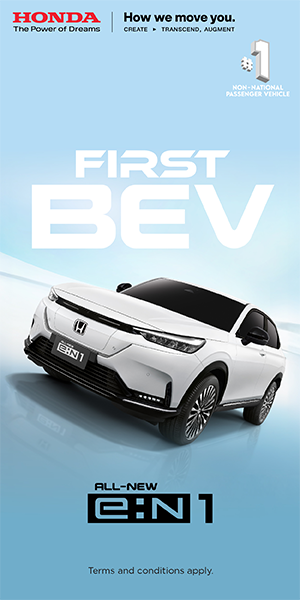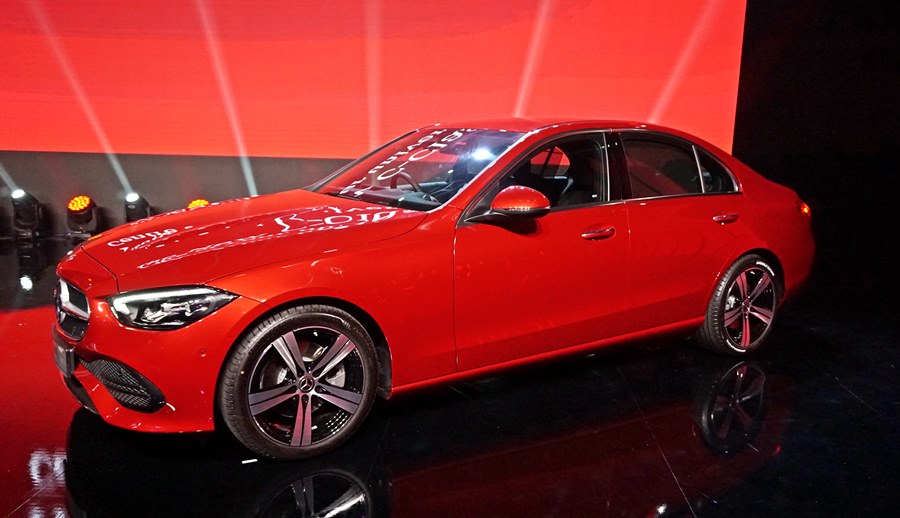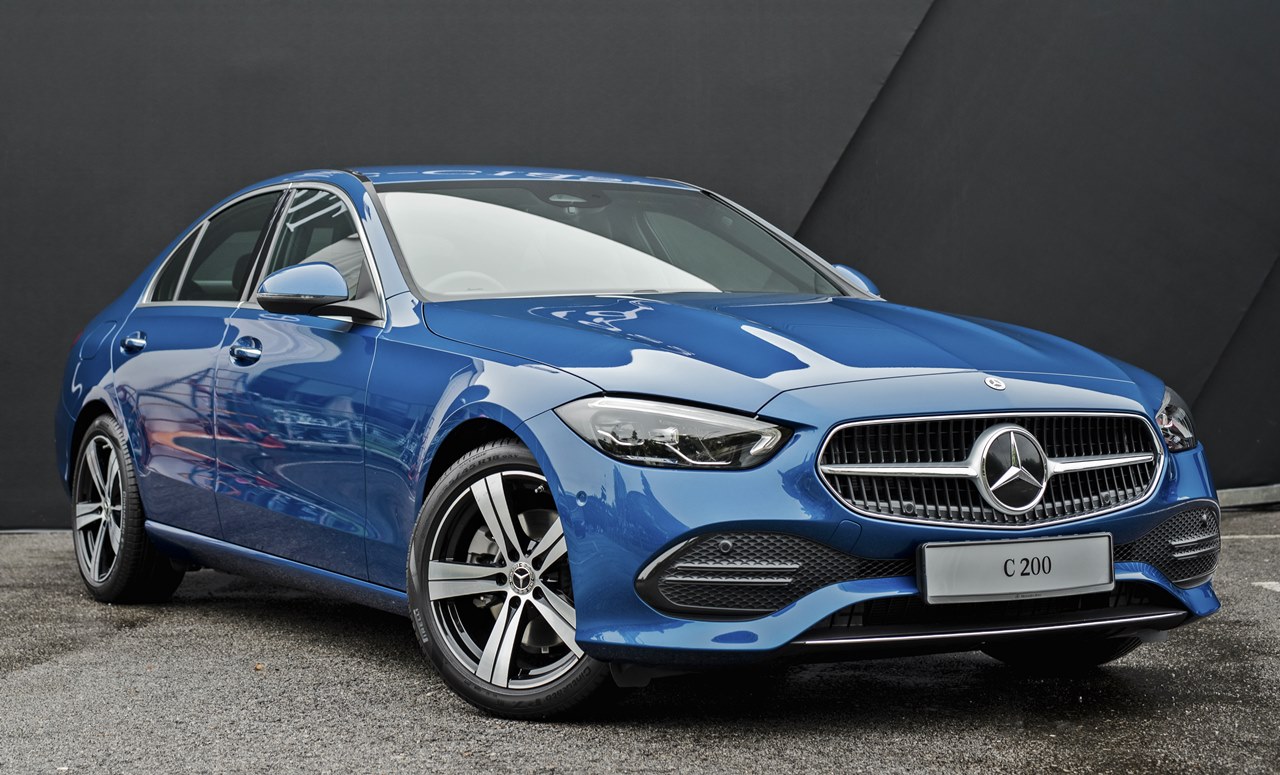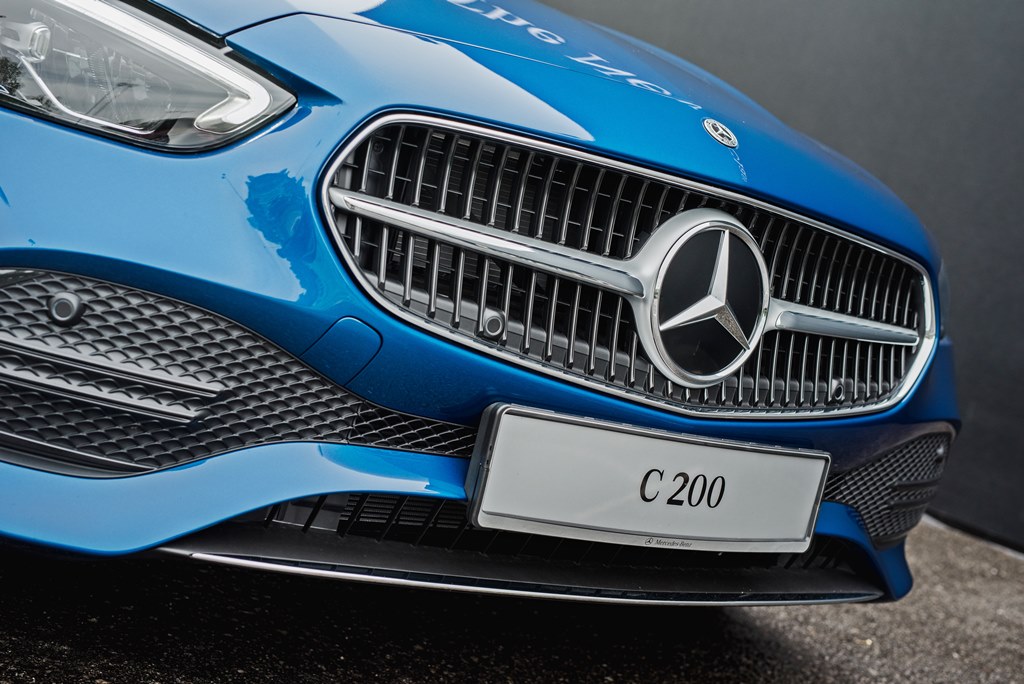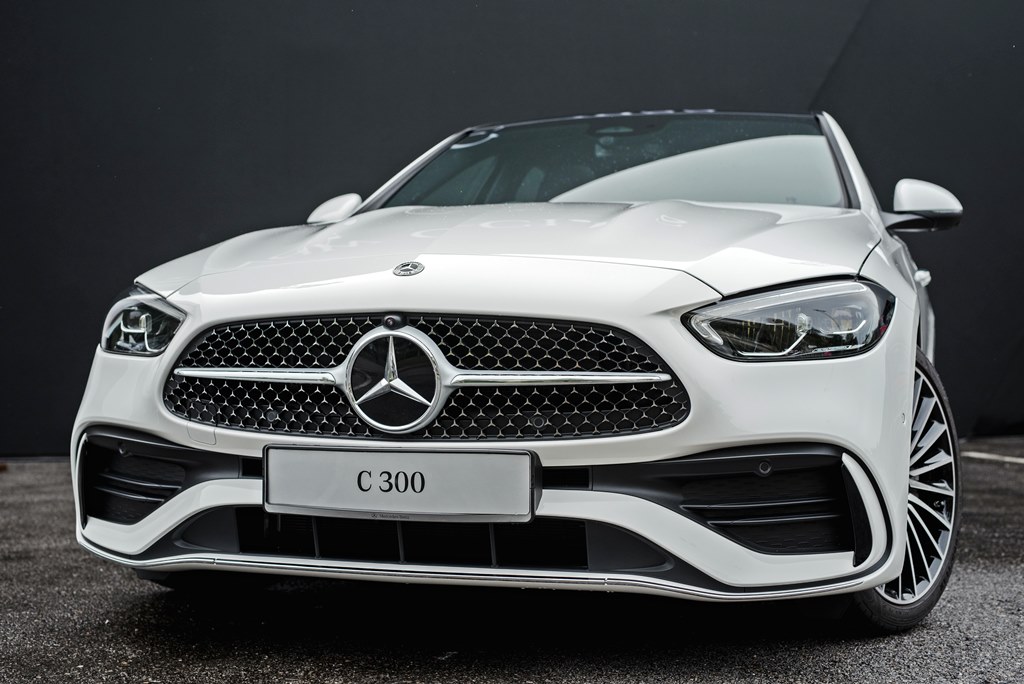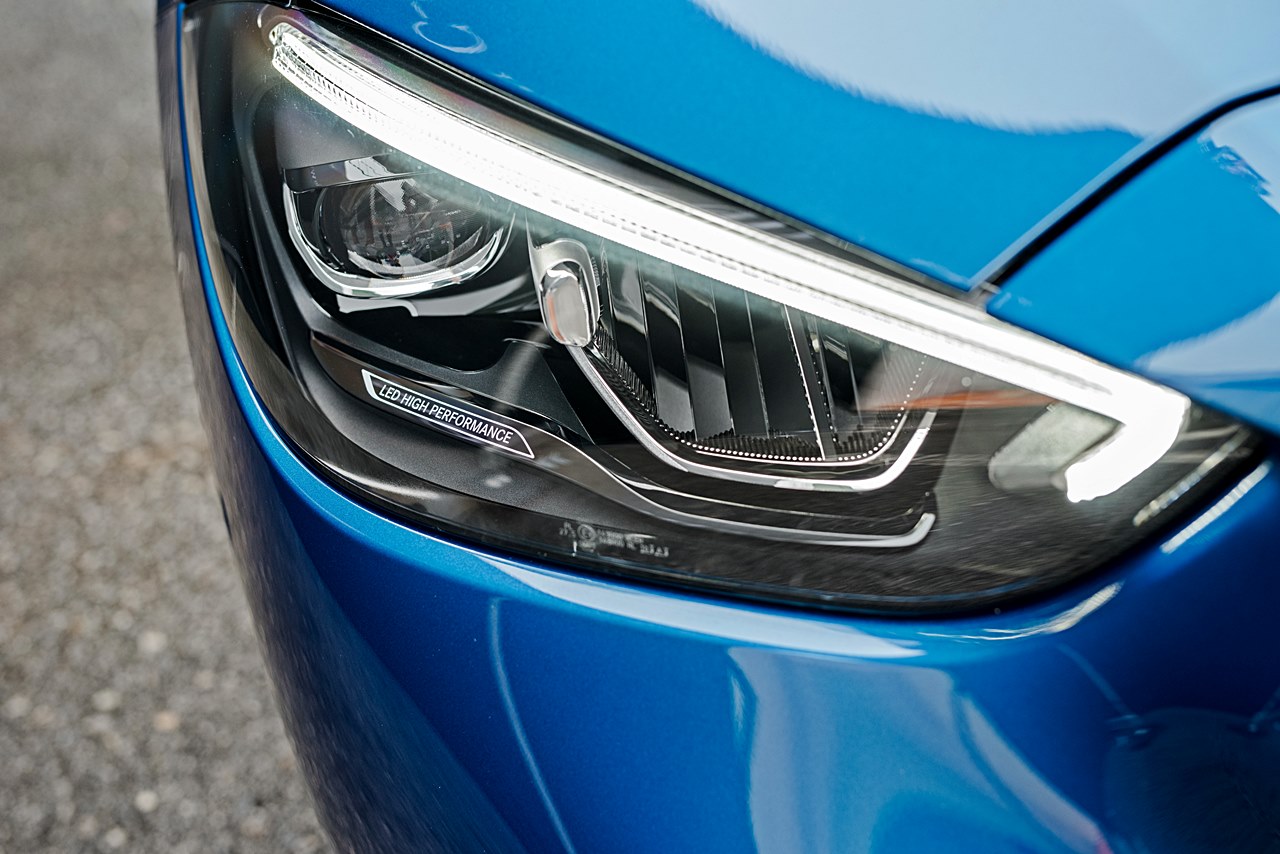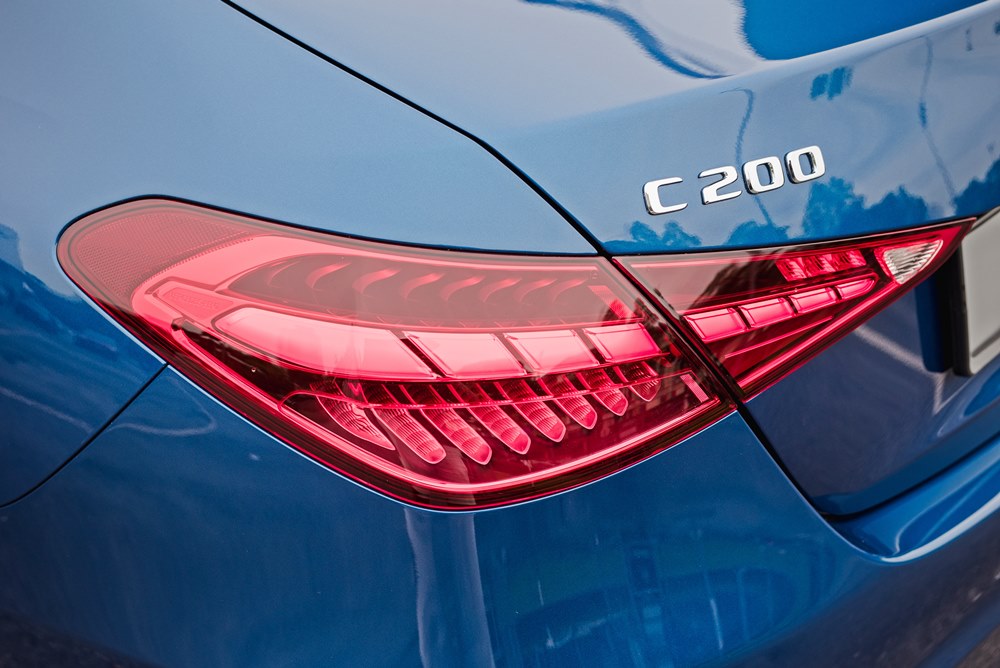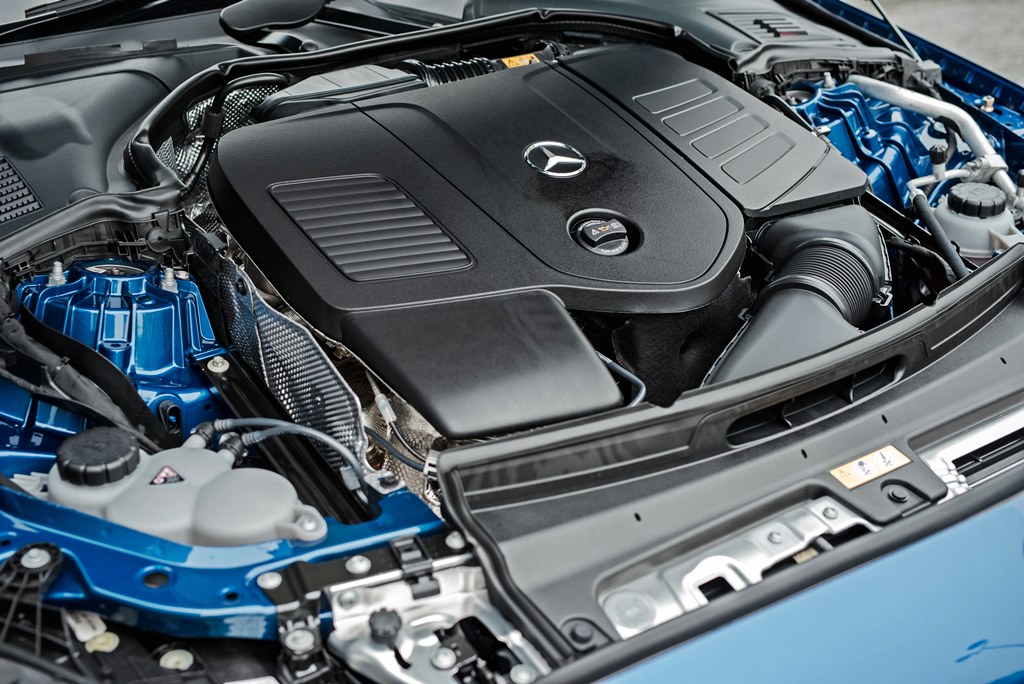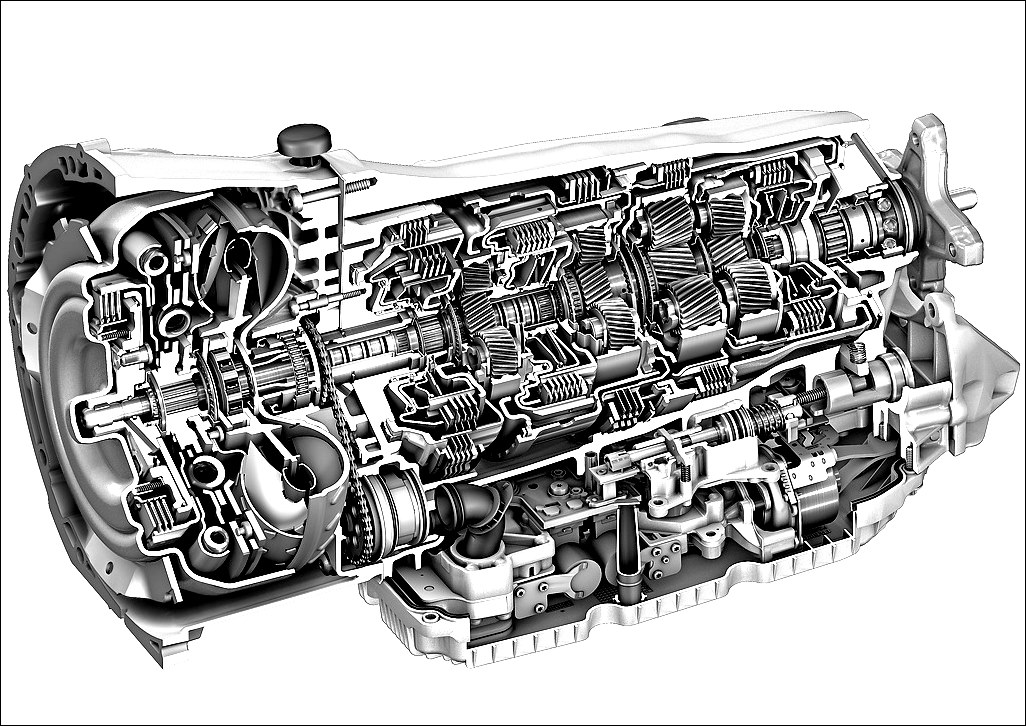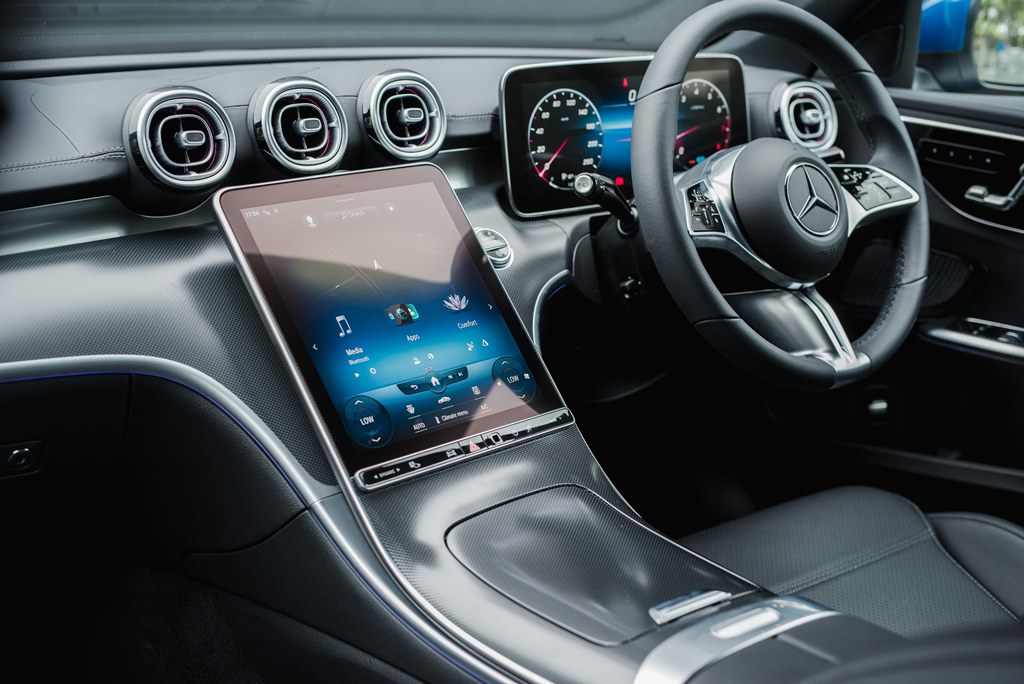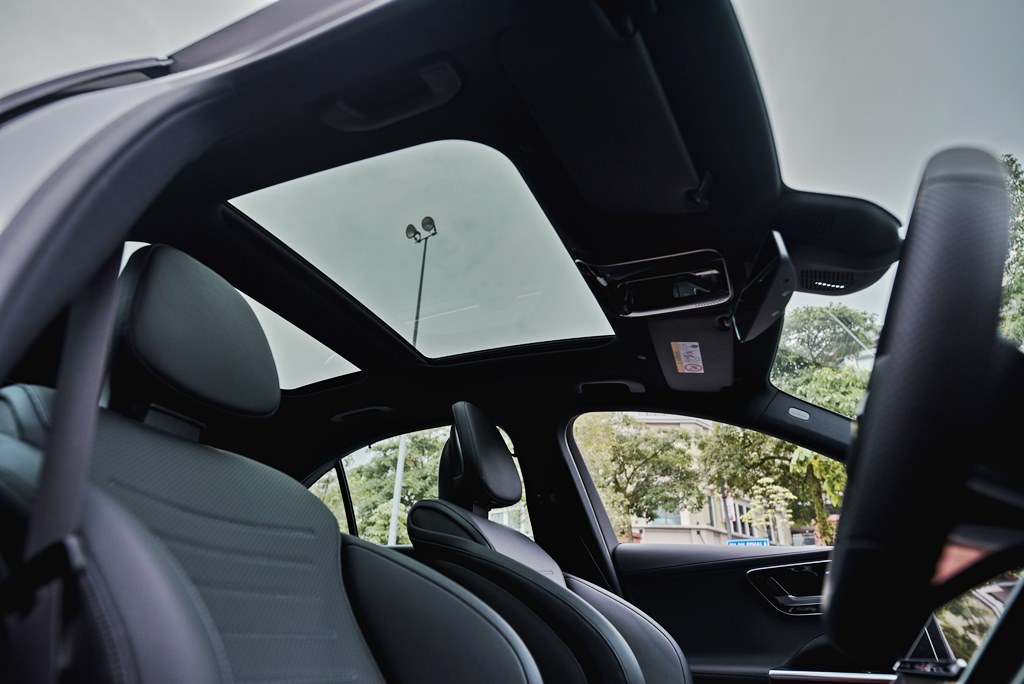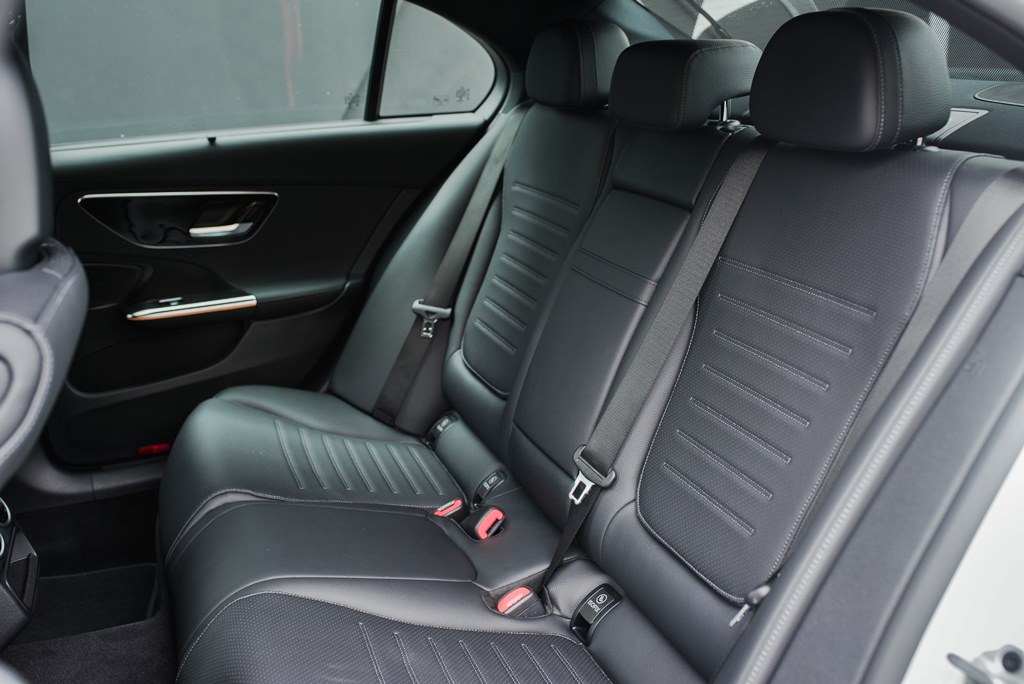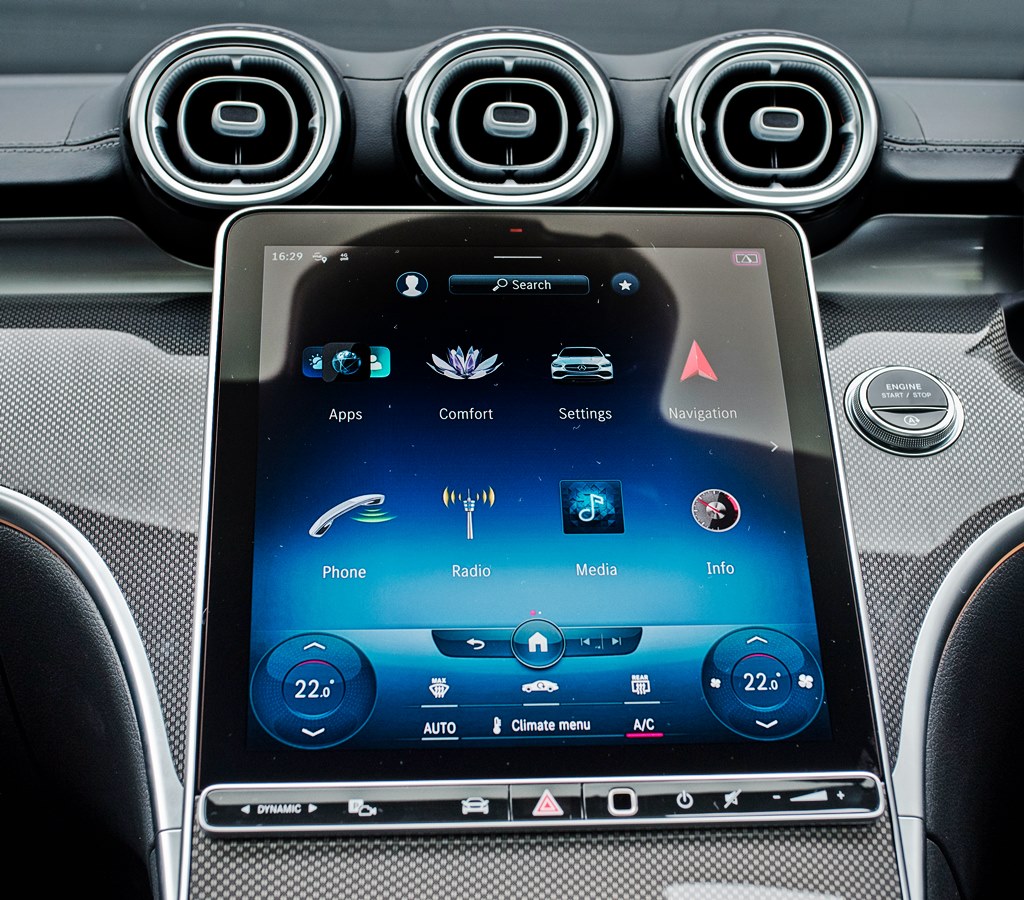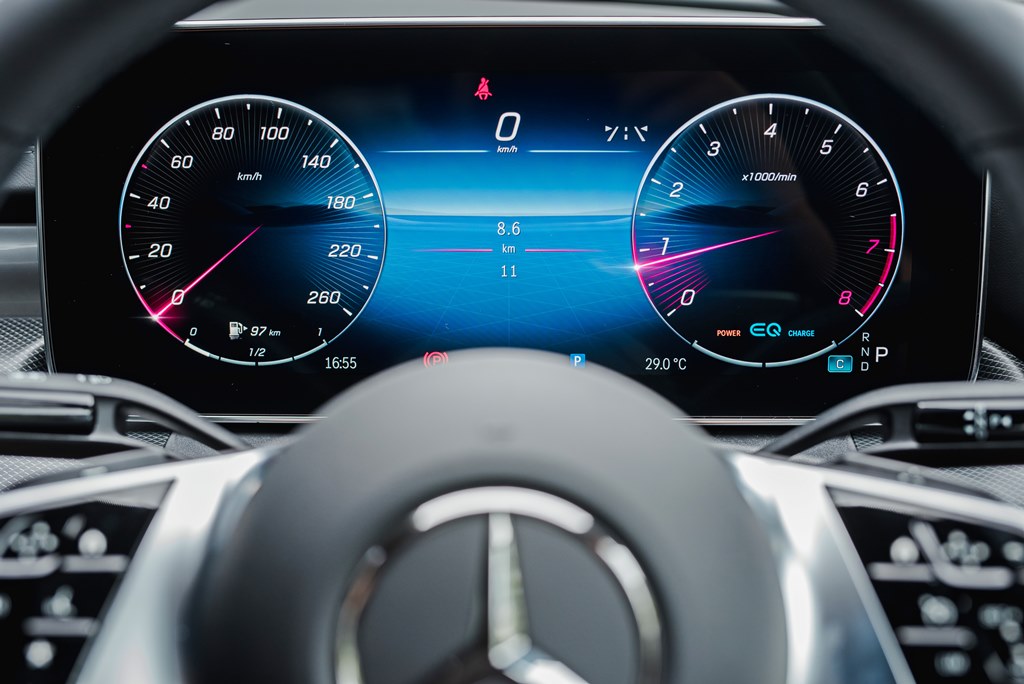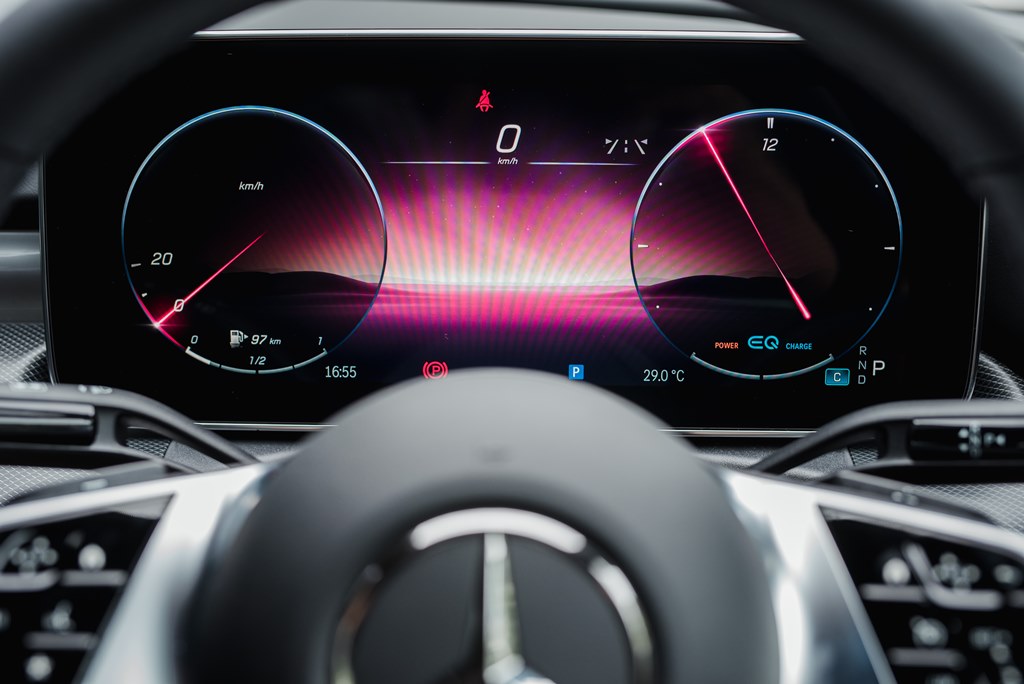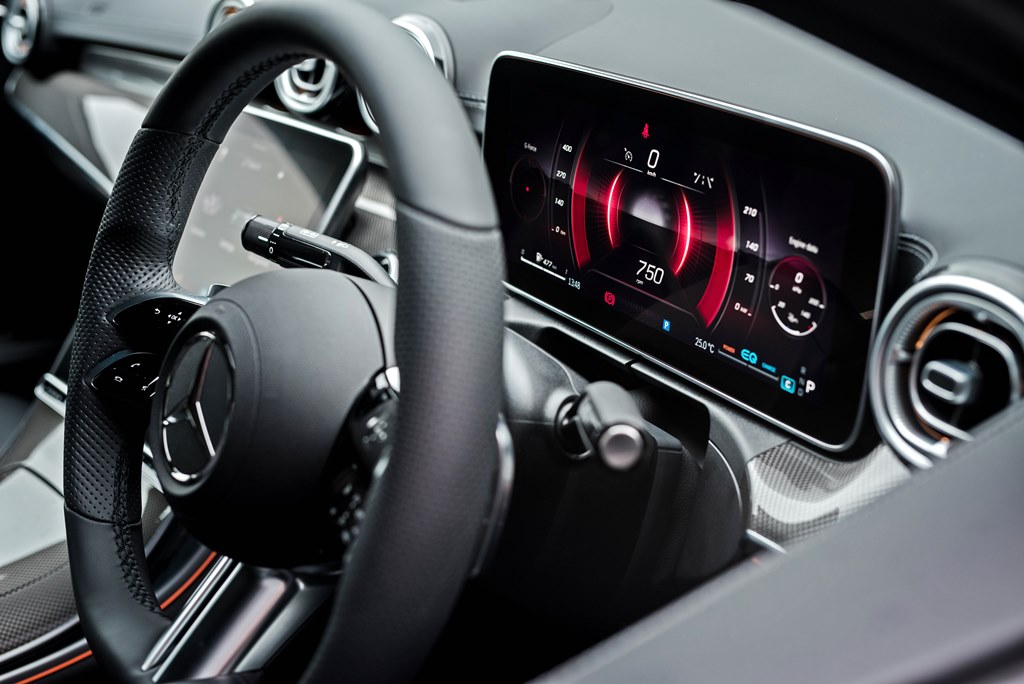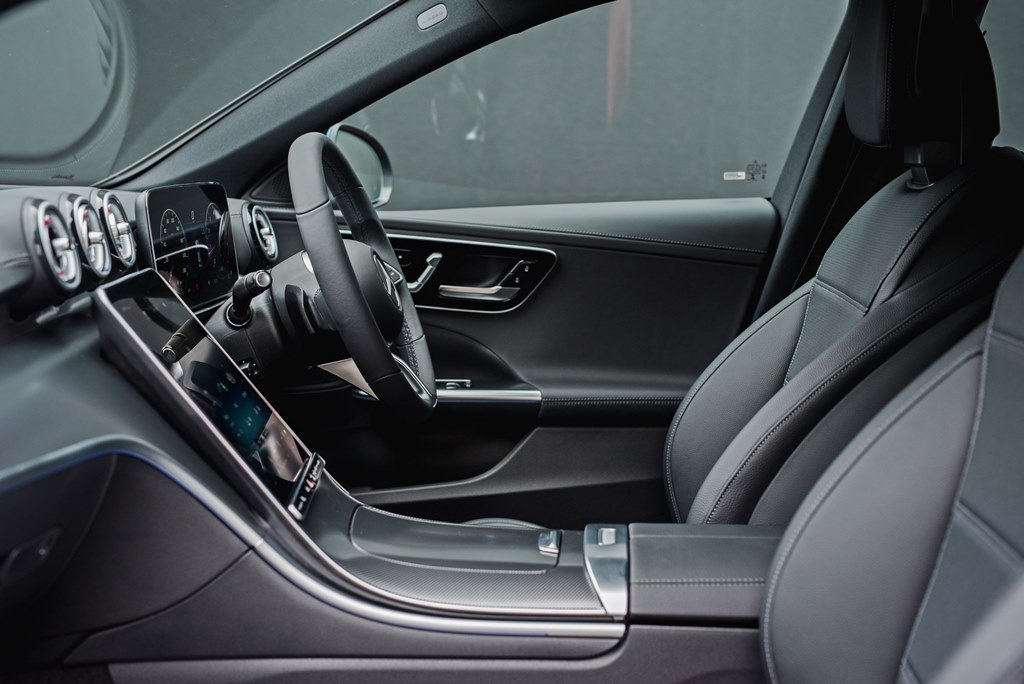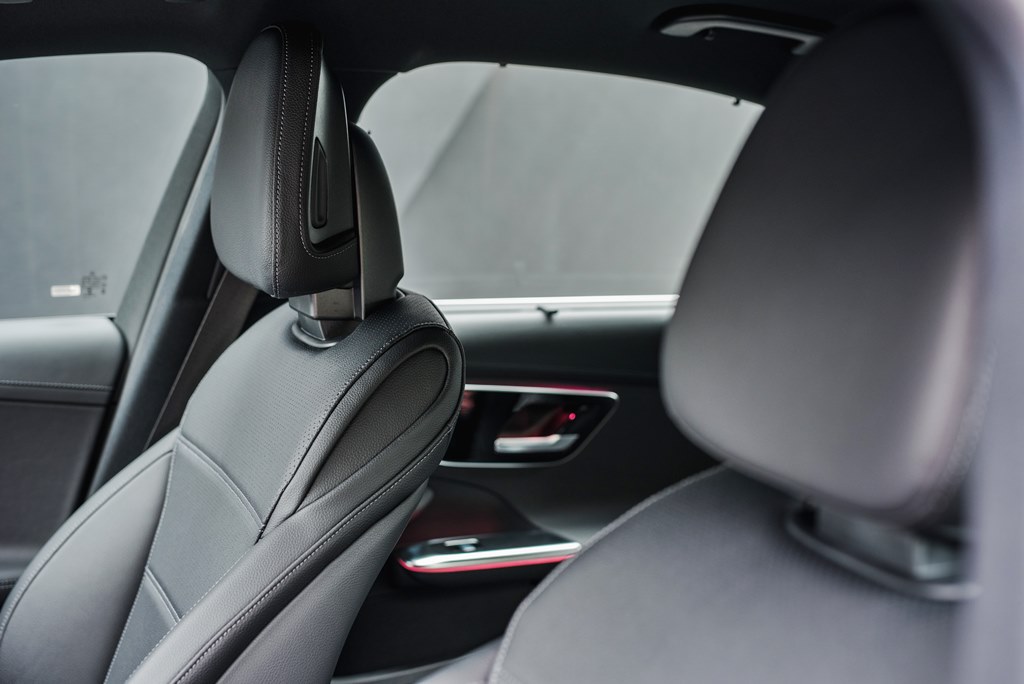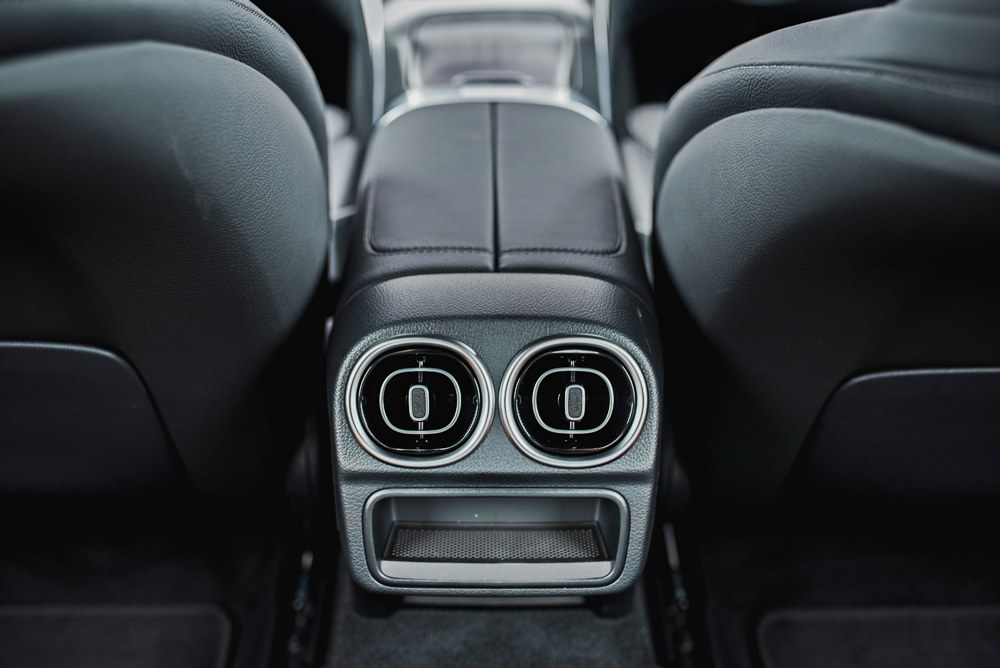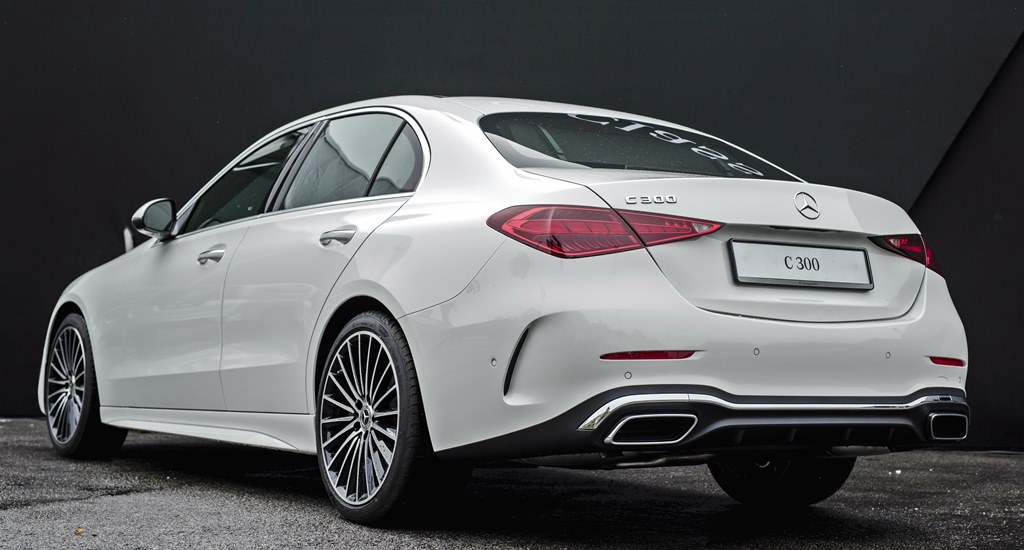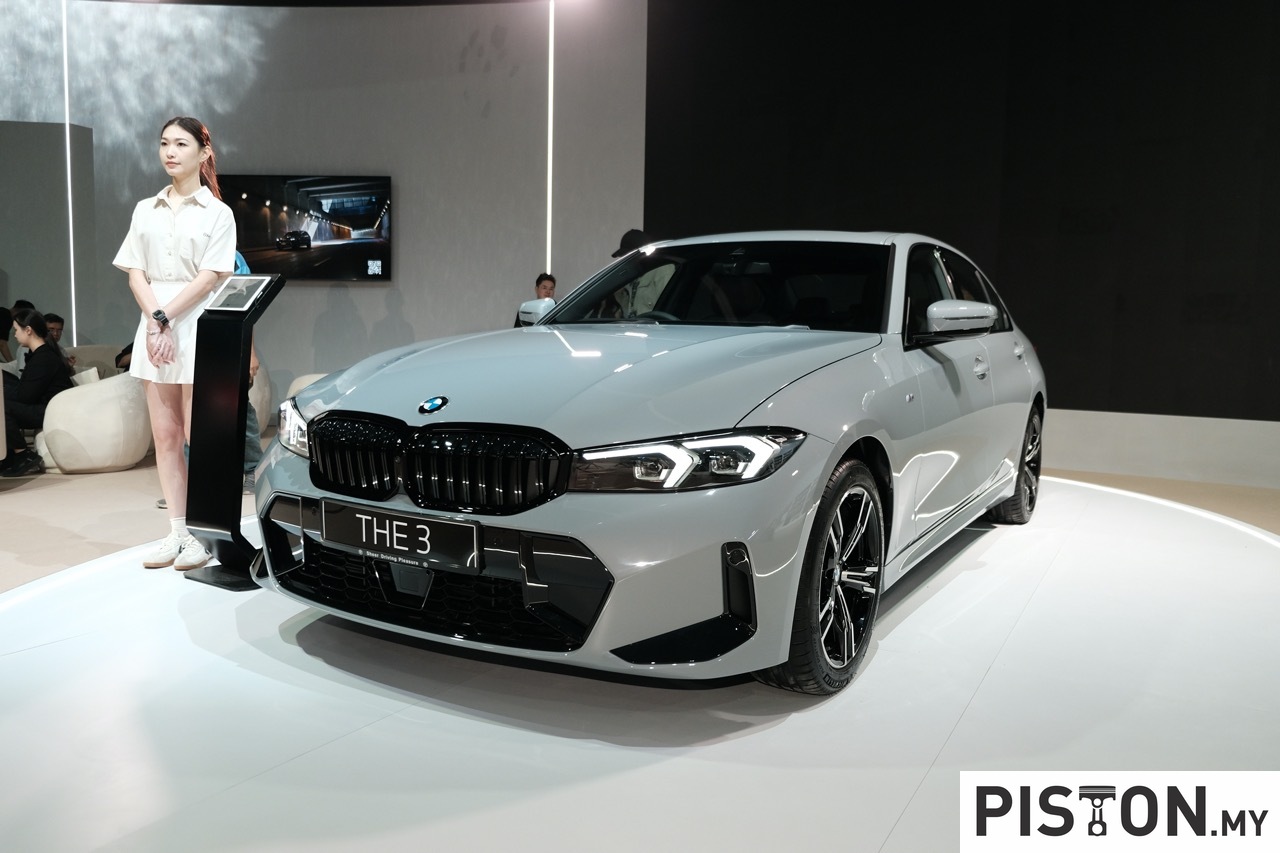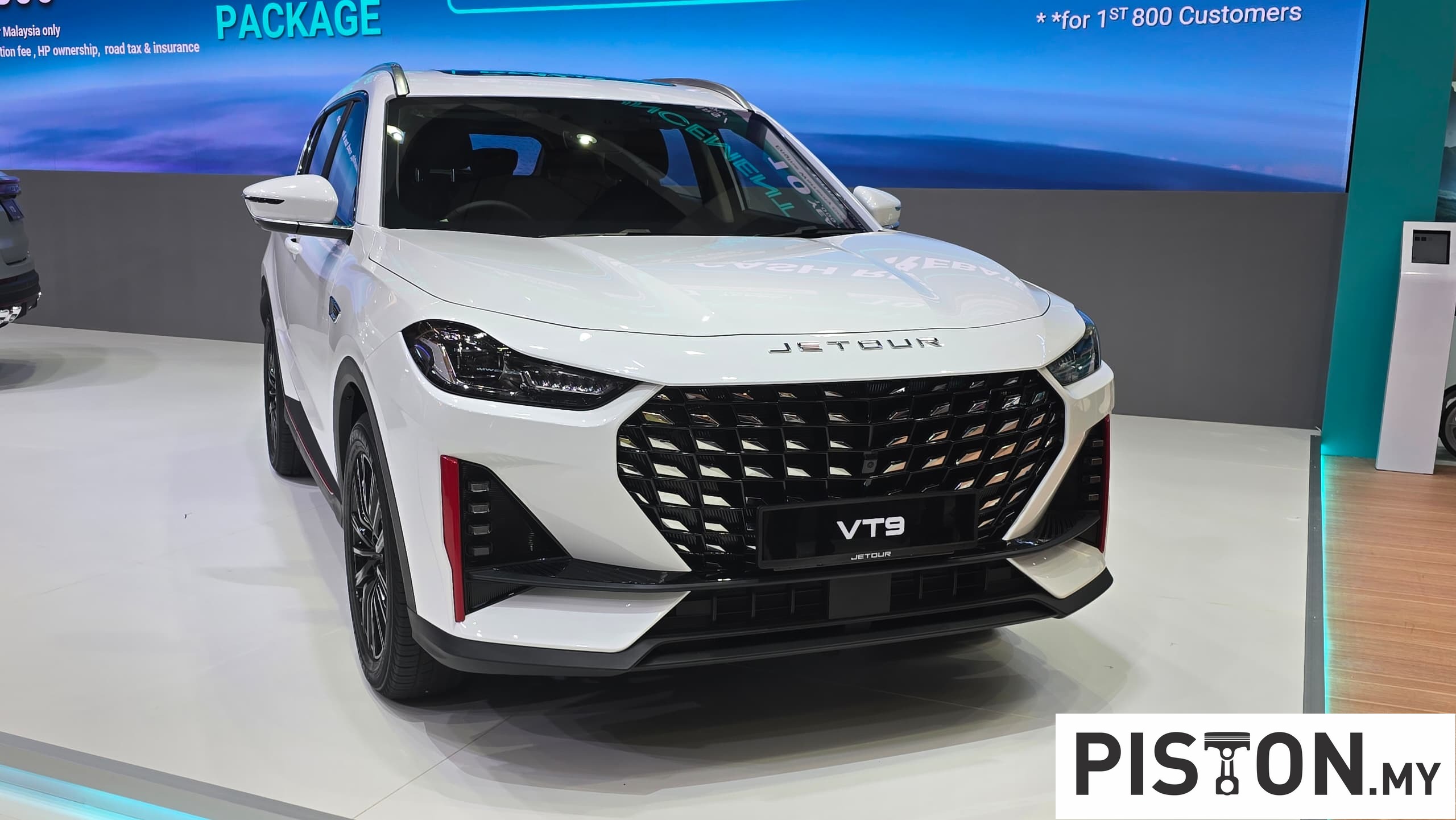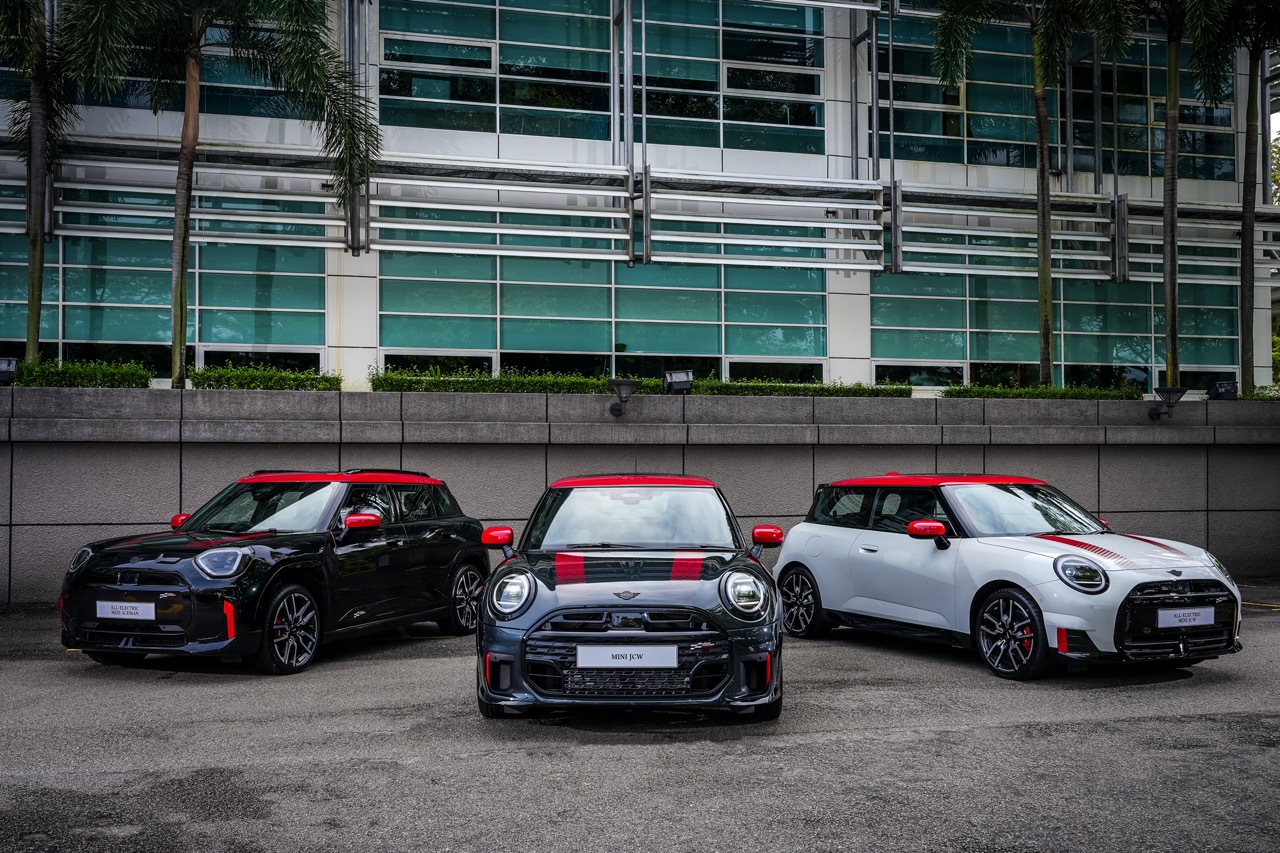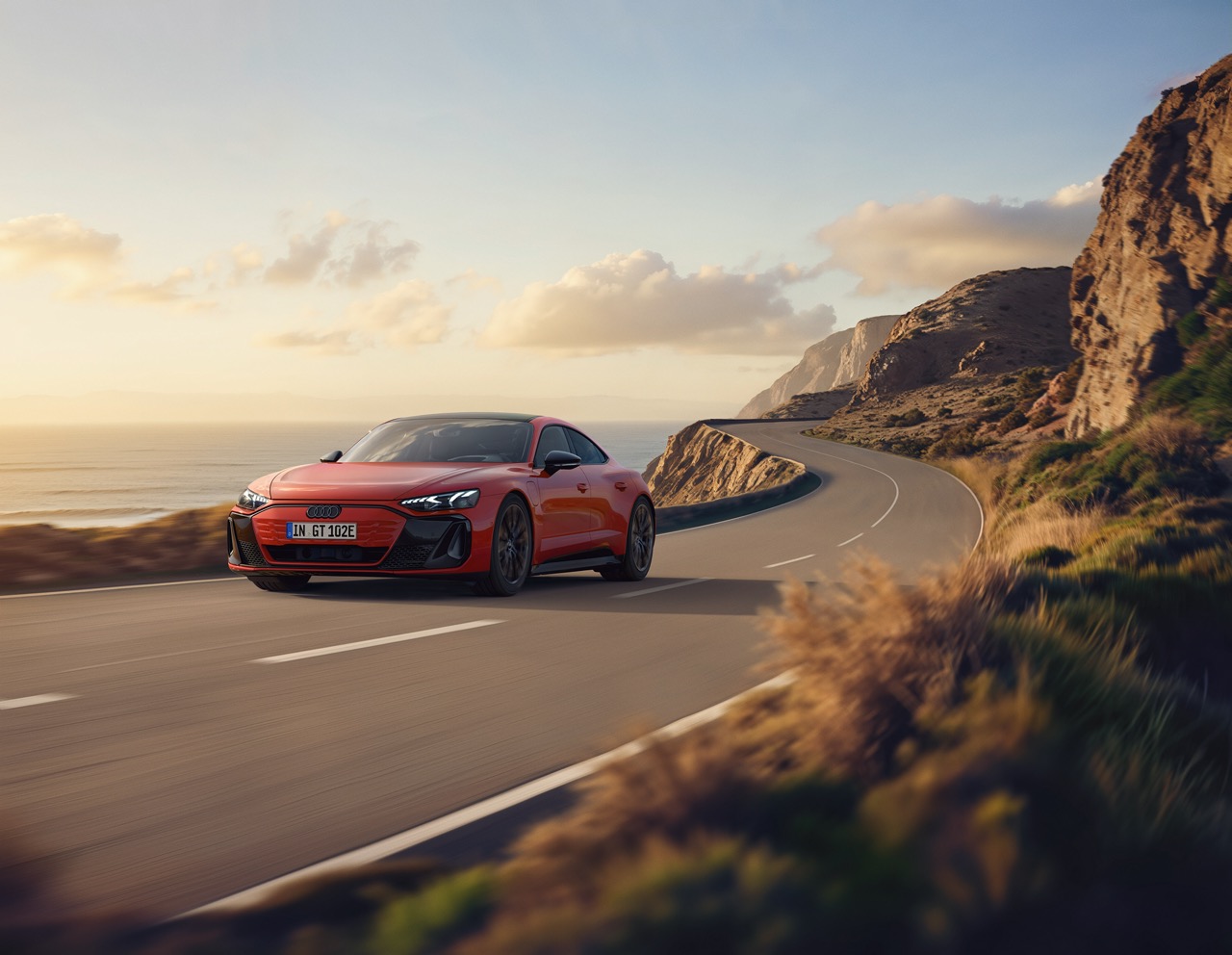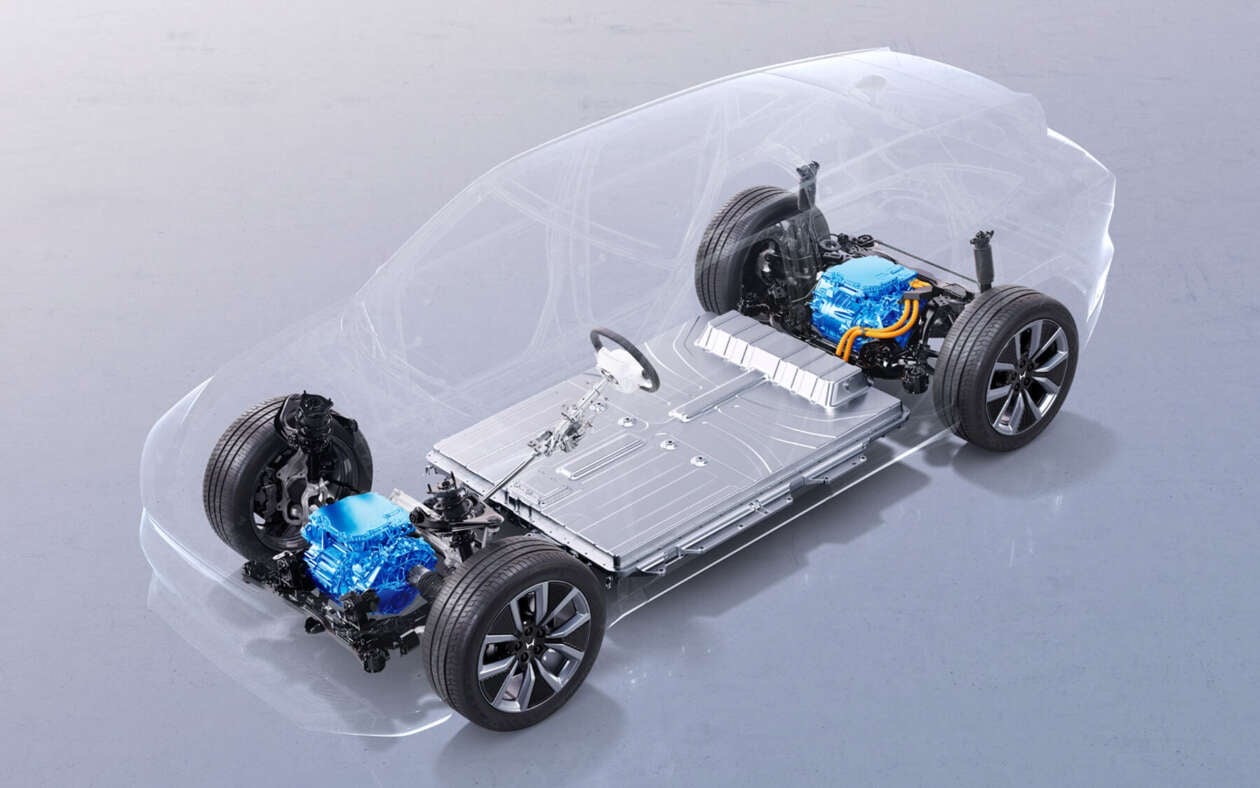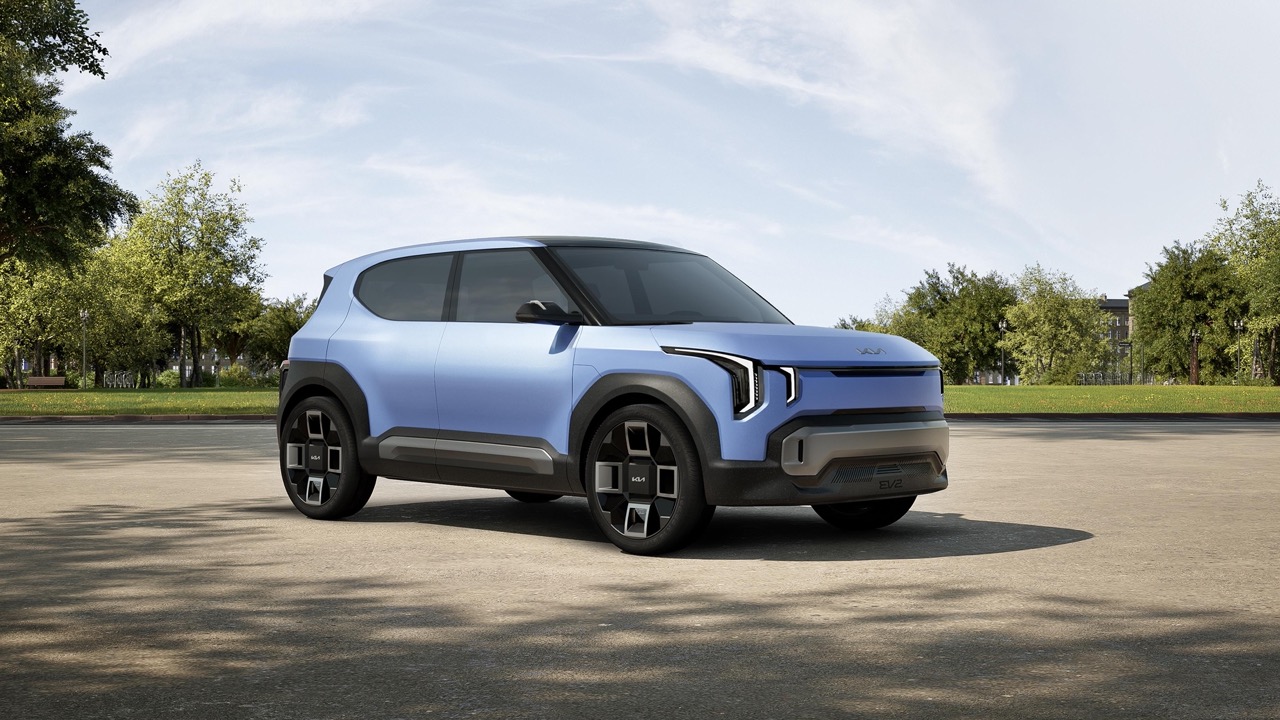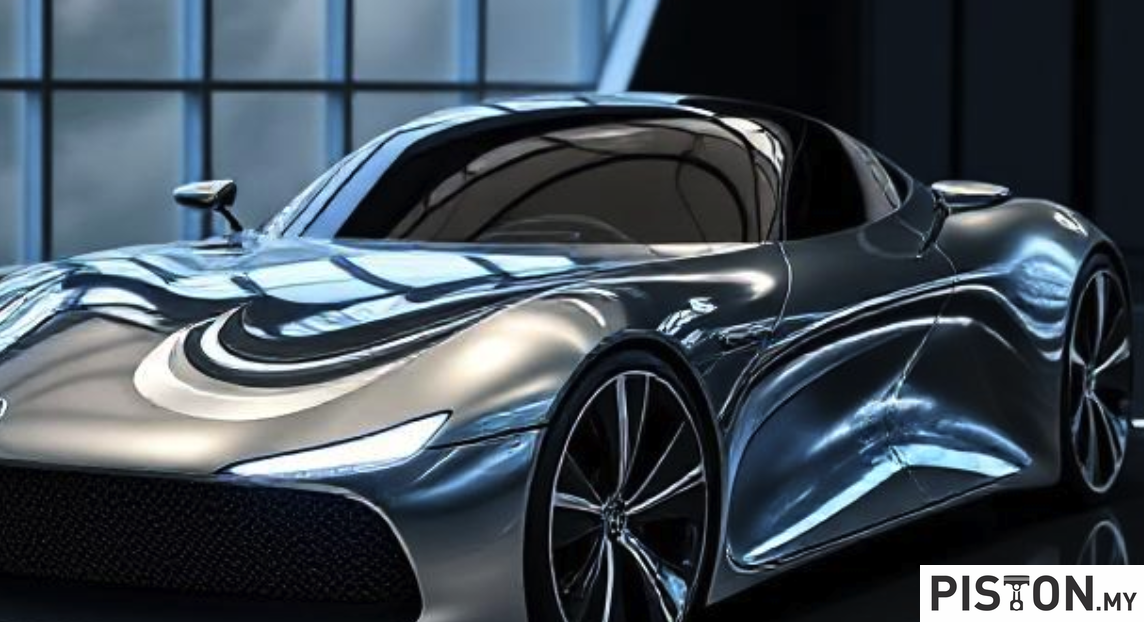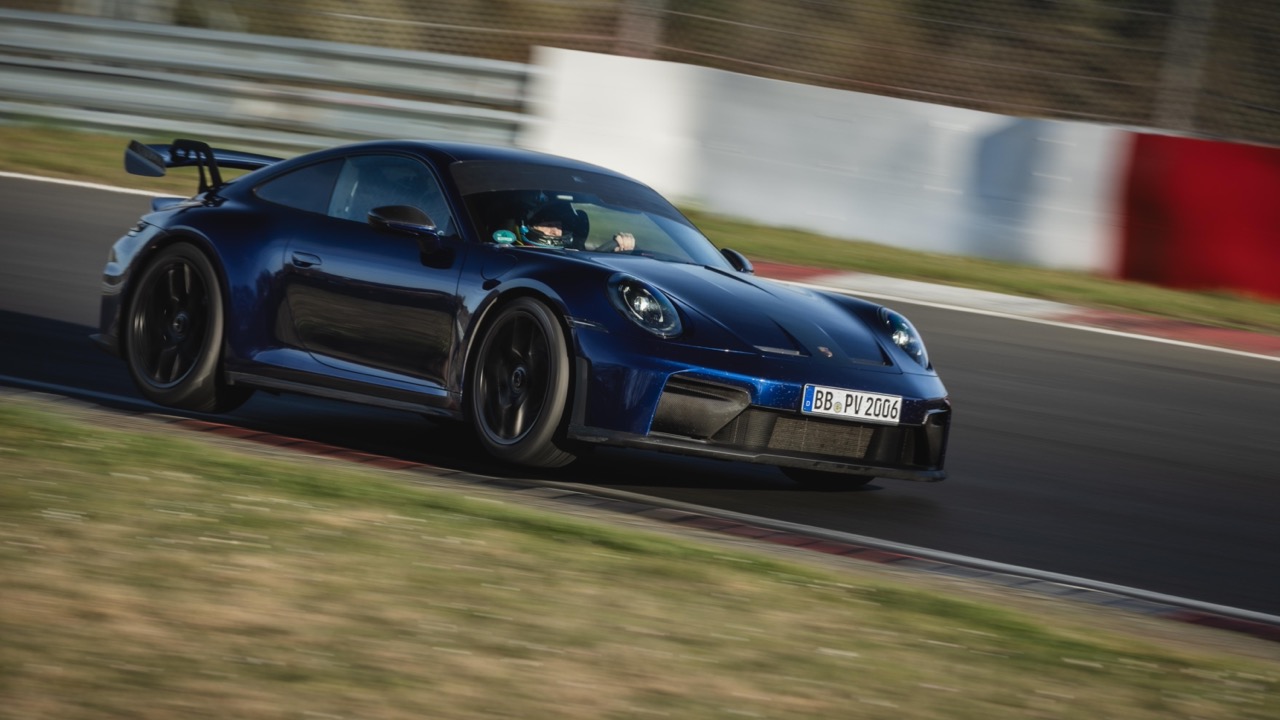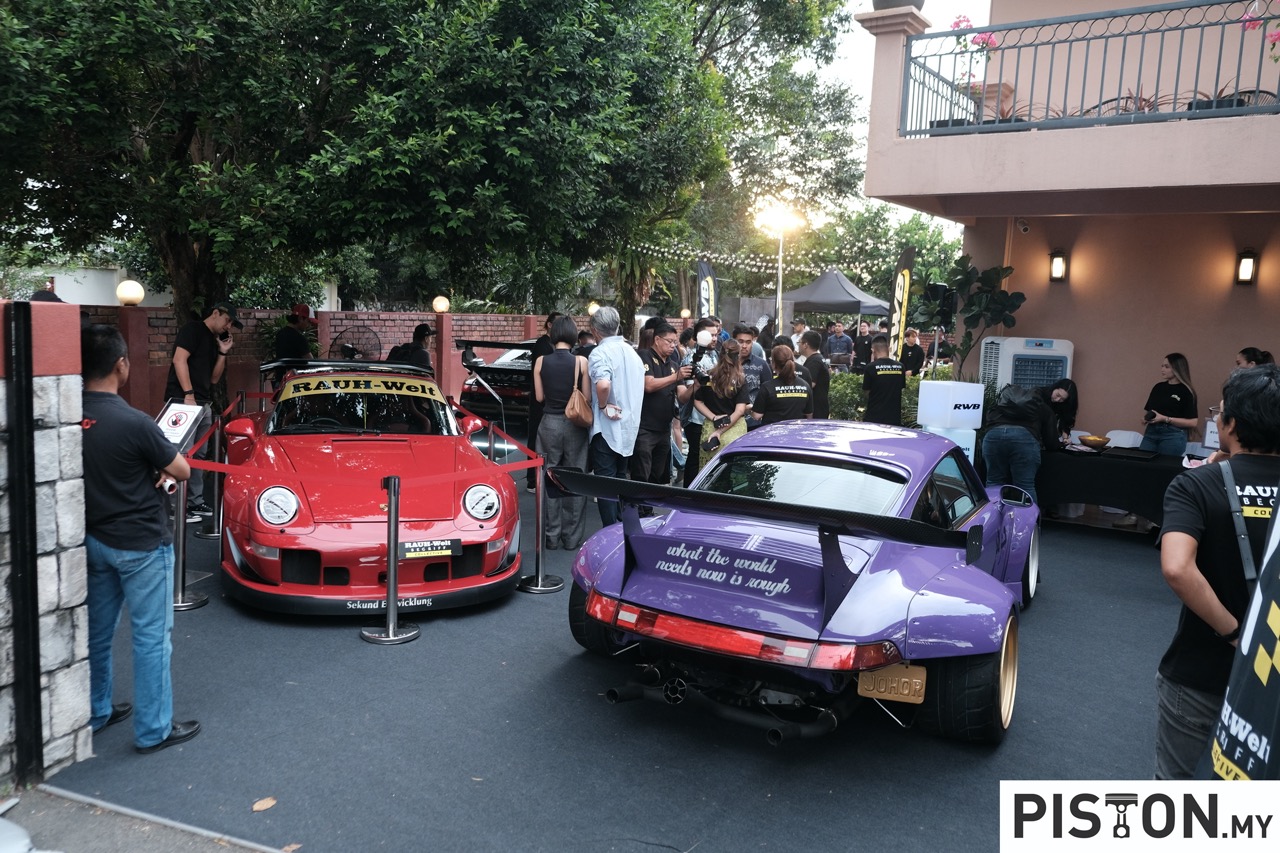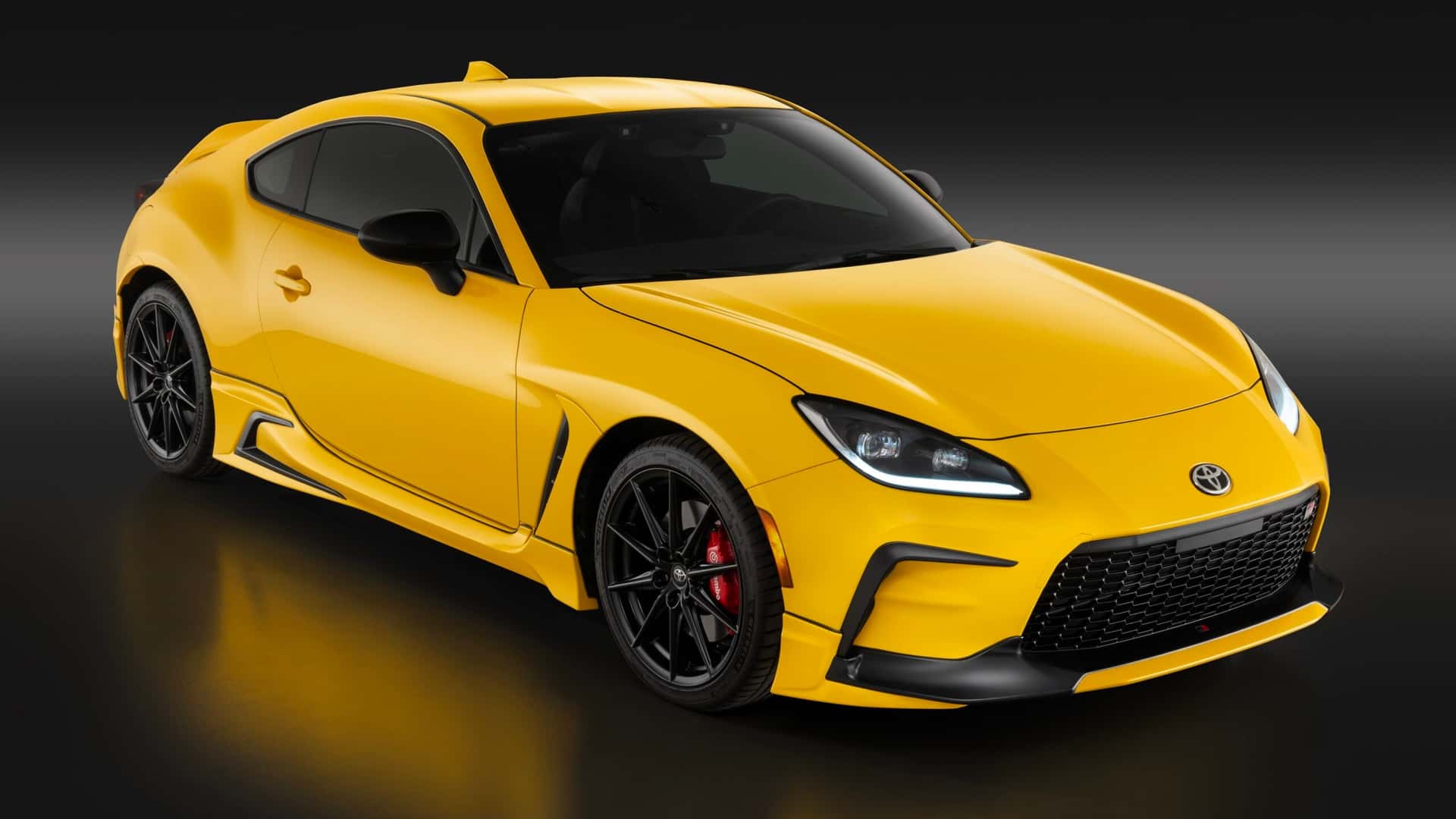The fifth generation of what was once the entry-level model of Mercedes-Benz (until the A-Class came along) has made its debut in Malaysia. It’s the new C-Class (W206) is initially being imported as a CBU (completely built-up) import with locally-assembled versions coming from the plant in Pahang later in the year.
Mercedes-Benz Malaysia offers two variants of the best-selling Mercedes-Benz model of the last 10 years – the C 200 Avantgarde Line priced from RM288,334 and C 300 AMG Line priced from RM330, 681. The prices exclude insurance premiums and 50% of the sales tax applicable. While the locally-assembled versions will have lower prices, they will likely not enjoy full sales tax exemption if the government does not extend the provision past June 30, 2022.
‘Baby S-Class’
Presented as a ‘baby S-Class’, the new C-Class takes many styling elements – outside as well as inside – and technology from the brand’s flagship model which was launched in Malaysia last December. It retains the sporty profile with a short front overhang, long wheelbase and rear overhang and ‘cab-backward’ design. Though the top of the engine is flat, there are ‘power domes’ on the bonnet which complement the performance image and provide an impression of forward motion.
The brand’s hallmark radiator grille has the same layout for both variants but differs in details. With the C 200 having Avantgarde line trim, the highlights are in the form of elegant vertical trim strips in high-sheen aluminium and chrome. For the C 300 which has AMG Line trim, the Mercedes-Benz pattern grille has star designs in chrome.
The headlight shapes on the new model have a similarity with those on the S-Class but do not have the advanced DIGITAL LIGHT system. Nevertheless, they are still LED high-performance units with adaptive capability to maximise the lighting distance, rather than just automatically switching between high and low beams when other vehicles approach. The rear units also use LEDs for reduced energy consumption and longer life.
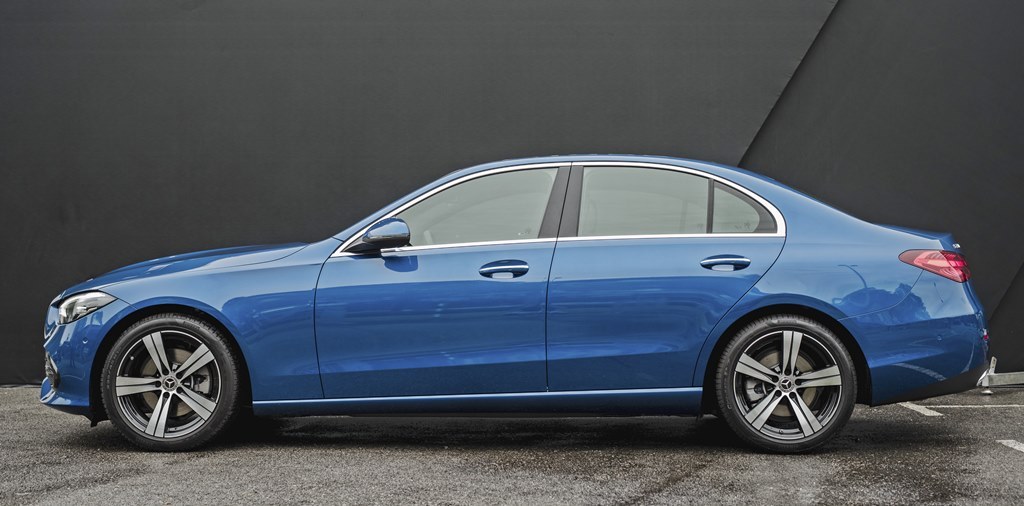
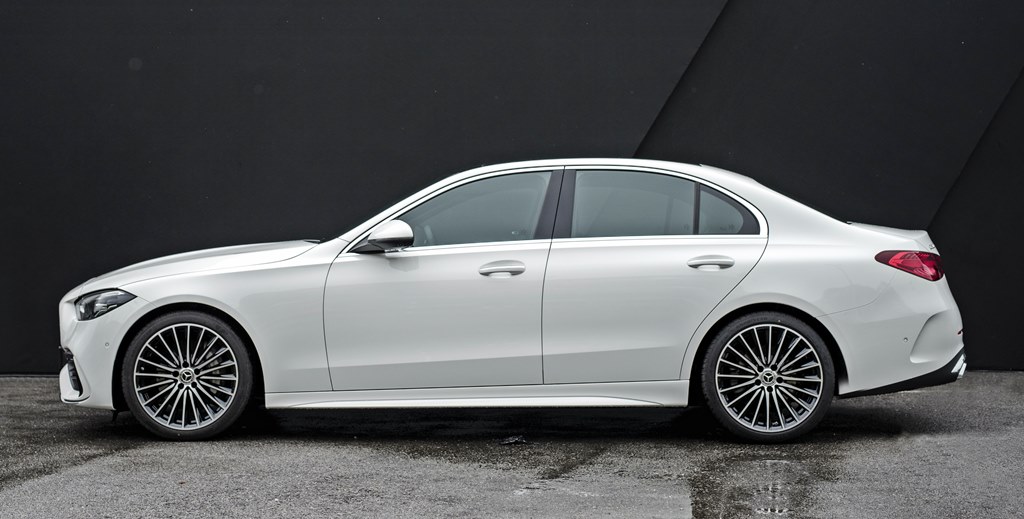
The wheels also differ in size, with the C 200 having an 18-inch size and 5 spokes while the C 300 is fitted with 19-inch AMG multi-spoke wheels. While the C 200 comes with run-flat tyres as standard, the C 300 does not and owners instead get a TIREFIT kit. This kit comes with a sealant to seal punctures of up to 4 mm and there is also an inflator powered from the 12V cigarette lighter socket. As with run-flat tyres, Mercedes-Benz advises drivers to travel at not more than 80 km/h when the tyre is repaired, and the sealant should be replaced with a new bottle after 4 years.
The rear-end design will immediately identify the new model as a Mercedes-Benz sedan with its familiar form. The tail lamps, for the first time, have a 2-piece design, with the light functions divided between the side and boot lid elements which curve around the corners. Attention to detail, like on the front units. can be seen in the silver-grey diamond-pattern trim.
Slightly longer body
Compared to the previous generation, the new C-Class has grown in overall length with an increase of 65 mm, while the wheelbase has gained 25 mm. However, the body width is almost the same as before, with just a 10 mm difference and the roofline is 9 mm closer to the road. Out of curiosity, we looked at the dimensions of the original ‘baby Benz’ – the W201 190 of 1982 – and it has an overall length of 4420 mm which is 331 mm shorter, and a wheelbase of 2665 mm, which was 200 mm less. It was also much narrower – 1678 mm versus 1820 mm for the latest model.
While Mercedes-Benz is among the carmakers at the forefront of electrification of products, it is also doing so with a ‘needs-based’ approach that will take into account the fact that different markets will require different levels of electrification in cars. Not all will be able to make the immediate jump to full electrification for some time to come. With the C-Class being sold so widely, its powertrains have to be suited to such conditions with some degree of electrification.
Mild hybrid powertrains
The new C-Class engines now have an integrated starter-generator (ISG) for intelligent assistance at low engine speeds as a mild hybrid of the second generation. The ISG uses a 48-volt on-board electrical system that ensures functions such as gliding, boosting or energy recovery, and makes significant fuel savings possible. The engines also start very rapidly and comfortably as a result, so that the start/stop function is almost as imperceptible to the driver as the transition from gliding with the engine switched off to strong acceleration under engine power.
With the second-generation starter-generator, the engine gets additional output of up to 15 kW and 200 Nm more torque. A completely new feature is the segment charger with flow connection, an advancement of the twin-scroll technology for even more instantaneous response of the forced induction system. The technology for this new turbocharger comes from the Mercedes-AMG PETRONAS Formula 1 team, showing how motorsport can benefit production cars.
The output from the C 200 engine with a 1.5-litre displacement is 204 ps/300 Nm while the C 300, which has a 2-litre displacement, produces 258 ps/400 Nm. For short periods, the output of the C 300 can additionally be increased by up to 20 kW (27 ps) with overboost.
The 9G-TRONIC automatic transmission has been adapted for optimum performance with the ISG, and is installed in both variants. It uses a new generation of the fully integrated transmission control with multi-core processor and new design and connectivity technology. In addition to the increased computing power, the number of electric interfaces has been significantly reduced, and the weight of the transmission controls have been cut by 30% compared with the predecessor.
The key components of the new, dynamically configured suspension are a new 4-link axle at the front and a multi-link axle at the rear mounted to a subframe. For the Malaysian market, both variants come with AGILITY CONTROL suspension with a selective damping system.
More space for rear occupants
The interior designers have used the extra length of the new body to provide additional space for the occupants at the rear. The layout of the dashboard follows the common theme of the more rennet models with a standalone 11.9-inch touchscreen display panel at the centre and a slim 12.3-inch screen that shows the instruments and driving information. The dashboard is divided into an upper and a lower section, with new, flattened round vents reminiscent of aircraft engine nacelles.
The portrait orientation of the centre display is said to be advantageous for navigation and includes a fingerprint scanner to quickly and conveniently identify the owner (or designated user). This keeps personal data such as profiles or other information protected. The fingerprint scanner is located in a convenient location below the central display. As part of a one-time process, it records the distinctive biometric features of up to two random fingers per user. Therefore no one is able to observe a number combination, which could happen with PIN entry.
The instrument panel display can be individualized with three styles (Discreet, Sporty, and Classic) and three modes (Navigation, Assistance, Service). In ‘Sporty’, for example, red is the predominant colour and the tachometer has a dynamic design. Selection is easy with controls on the steering wheel. The new display aesthetic was developed for the S-Class and is now adapted for other models like the new C-Class.
Mercedes-Benz Malaysia has also included Augmented Video as standard equipment in the new C-Class. Using a camera which registers the surroundings in front of the vehicle, moving images are shown on the central display. In addition, virtual objects, information and markers are superimposed on the video image. These include directional arrows, lane-change recommendations and more. This can make navigation much easier, especially in urban areas.
The modern, highly reduced design of door panels frames both ends of the dashboard. The door centre panel with an integrated armrest evolves from a vertical surface into a horizontal orientation. Reflecting the design of the centre console, the front section takes the form of a metallic high-tech element. It can be used as a grab or closing handle, and houses the power window controls. Another highlight is the floating control cluster, into which the door opener and seat adjustment controls are integrated.
The design of seats (Comfort for the C 200 and Sports for the C 300) are worth mentioning as well. They have layers and enveloping surfaces to create a visual impression of lightness. The head restraints are also a completely new design and are attached to the backrest with a sealed piece of trim under which the adjustment mechanism is located.
More intelligent 2nd generation MBUX
With every new Mercedes-Benz model, the MBUX (Mercedes-Benz User Experience) interface is highlighted and for the new C-Class, this is a second generation system. The hardware and software have been advanced, while the voice assistant ‘Hey Mercedes’ is more interactive and has learning capabilities. In some cases, it does not need the activation keywords and can explains vehicle functions as well. So for those who never bother to read the Owner’s Manual (and many people don’t), the information can be obtained just by asking the on-board ‘assistant’.
With the Spotify and Apple Music services, Mercedes-Benz has now fully integrated the major music streaming services into the MBUX infotainment system. MBUX enables seamless access to the personal user profile at the linked music provider. This gives owners convenient access to a huge library of songs and curated playlists.
Though in the lower rungs of the Mercedes-Benz range, the C-Class still gets safety systems that are fairly advanced in the Driving Assistance Package. Besides helping the driver avoid an accident or reduce its damaging effects, the systems can also reduce driver workload in daily driving. A less tired driver will be more alert, reducing the risk of an accident.
For the latest C-Class, the usual active systems are present and work in an integrated manner using data and imagery from a camera and radar. Some systems will provide alerts while others will automatically brake the car if the driver does not act correctly to prevent a collision.
As with other Mercedes-Benz models for many years now, the C-Class can also park by itself with the driver only controlling the engine power. This is done by Active Parking Assist with PARKTRONIC and only works with parallel parking.
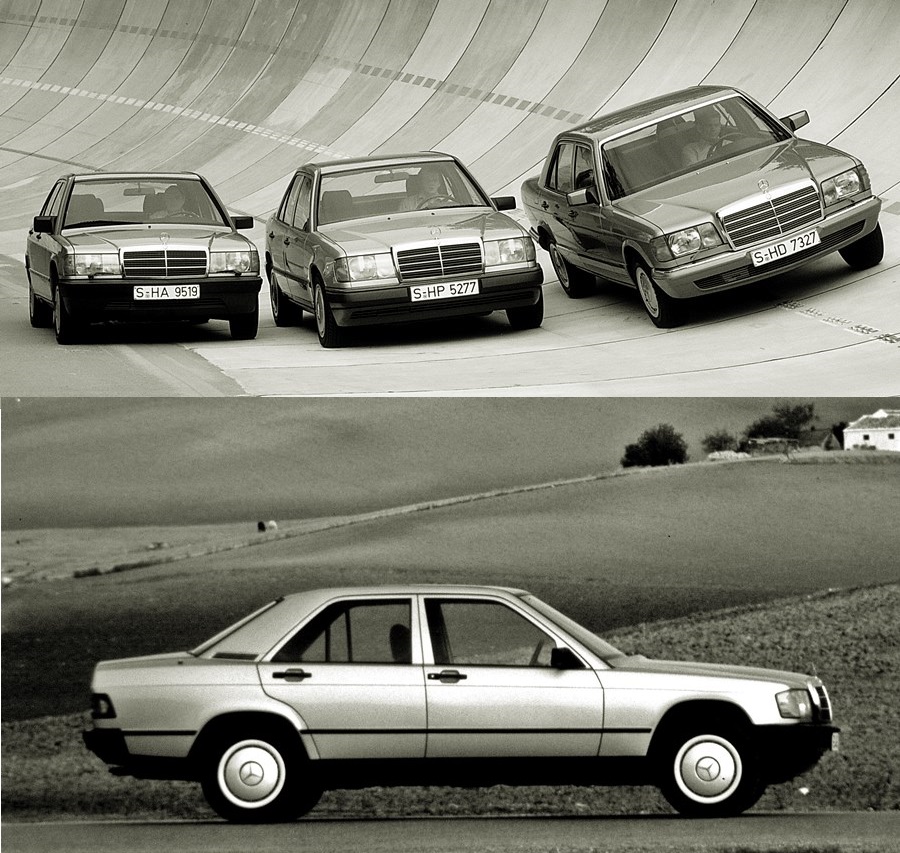
Daimler AG renamed to Mercedes-Benz Group AG which will focus on passenger vehicles only
x



